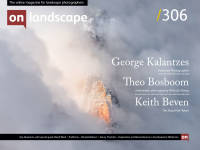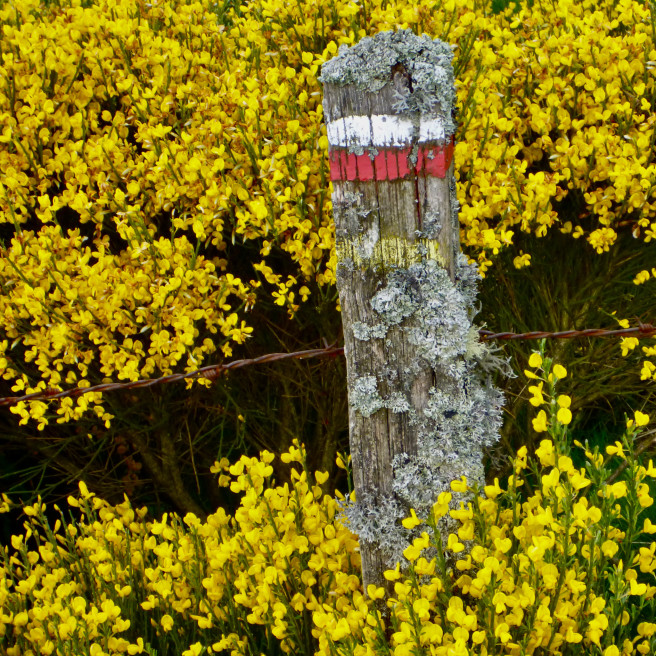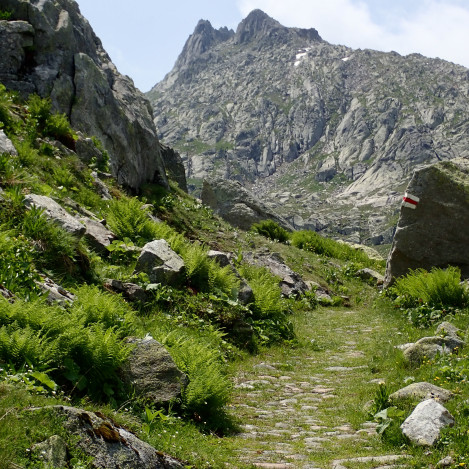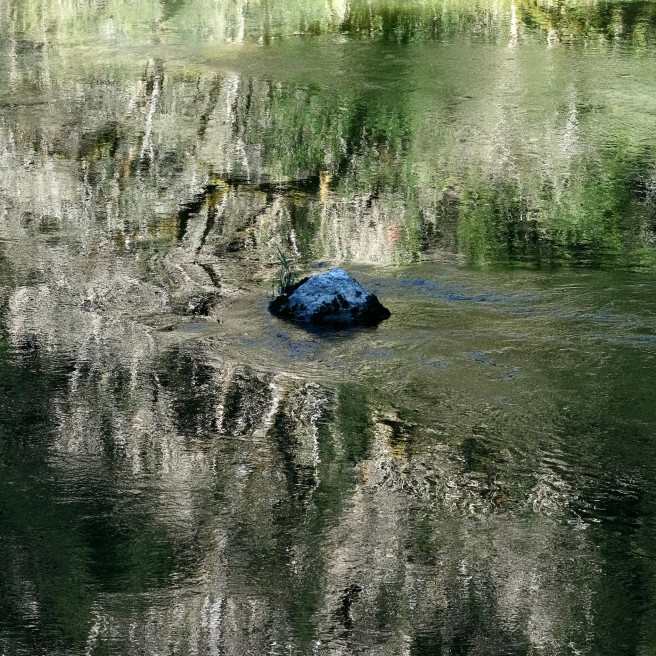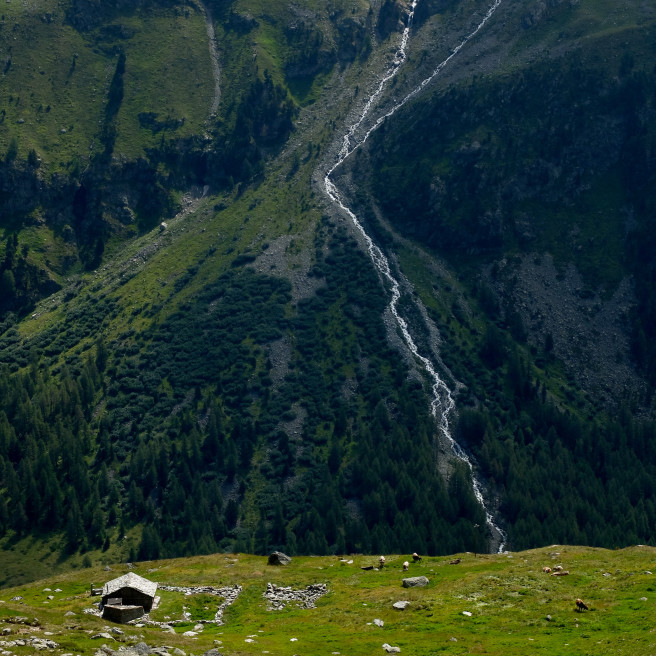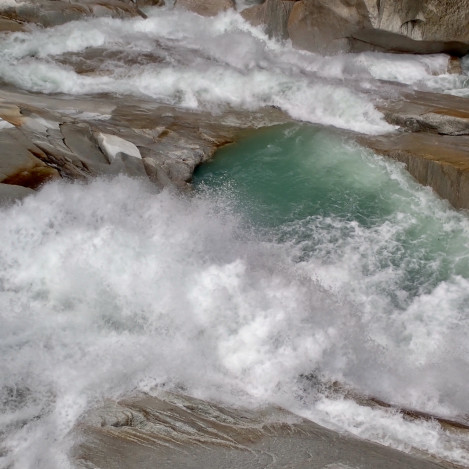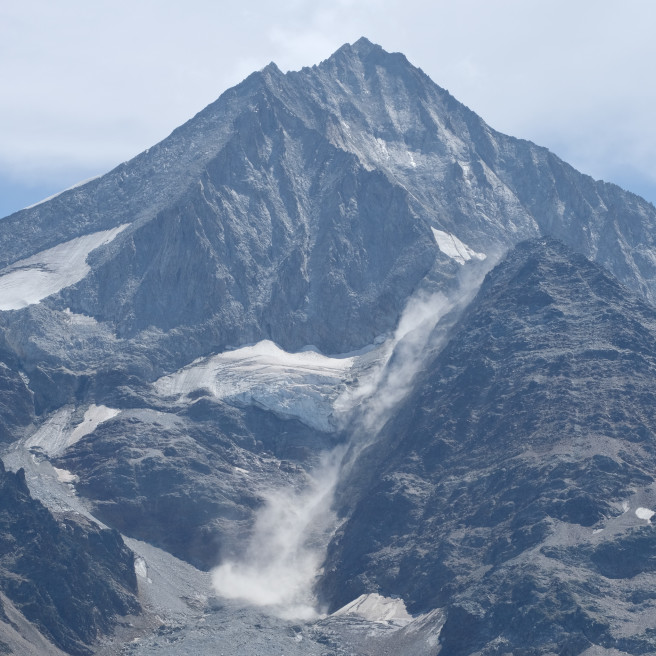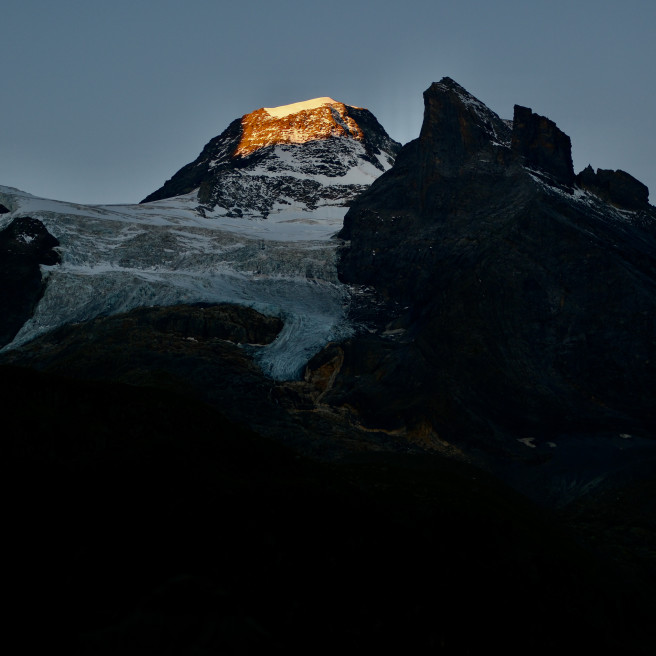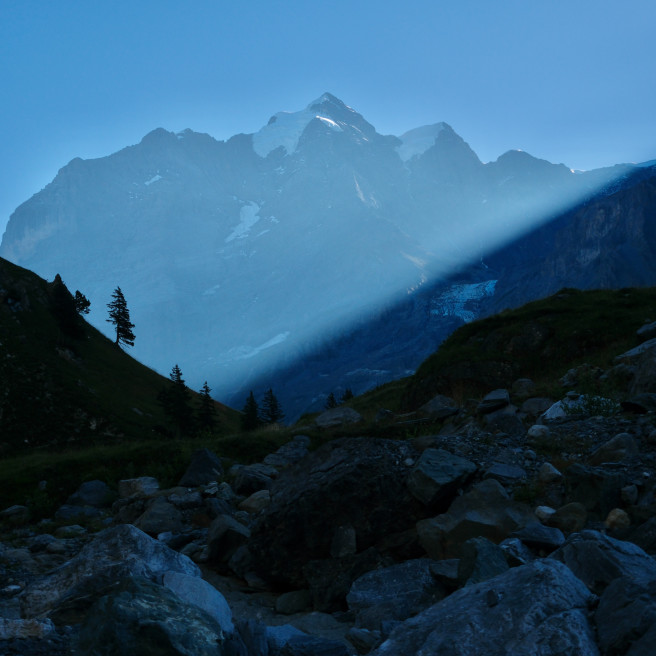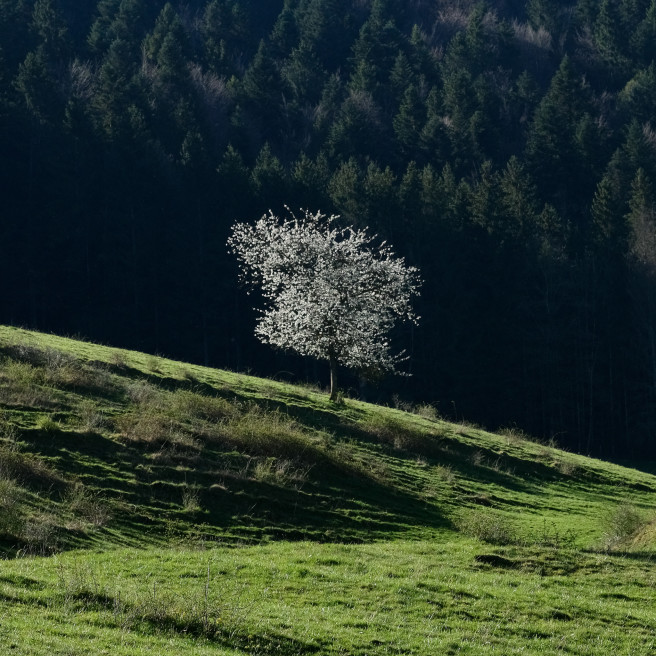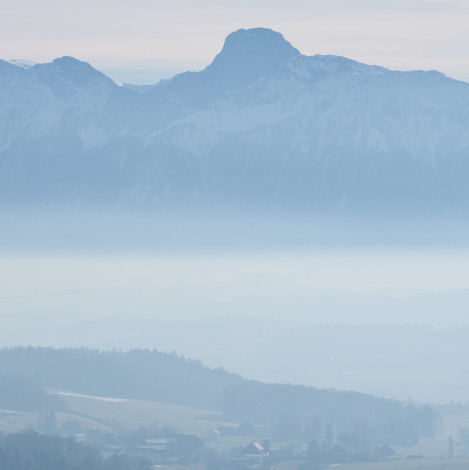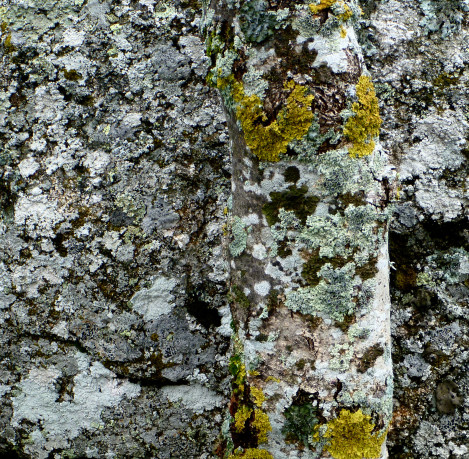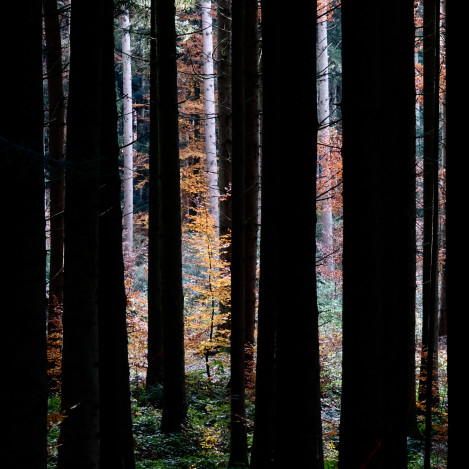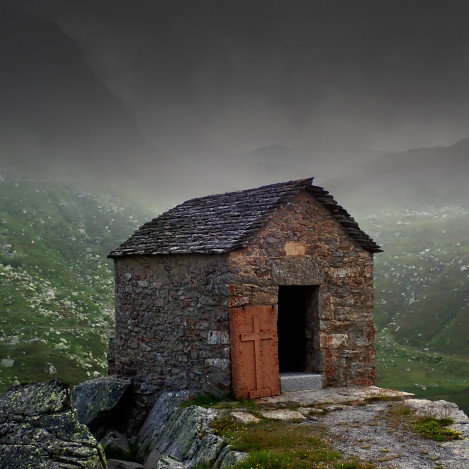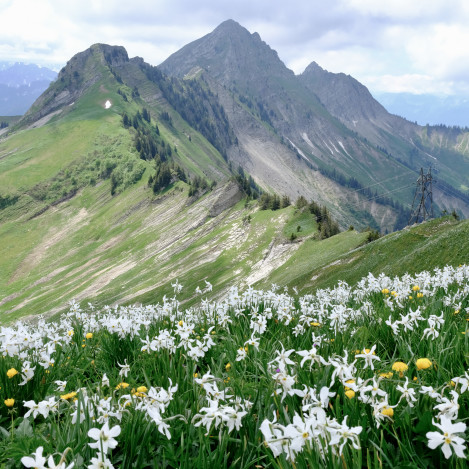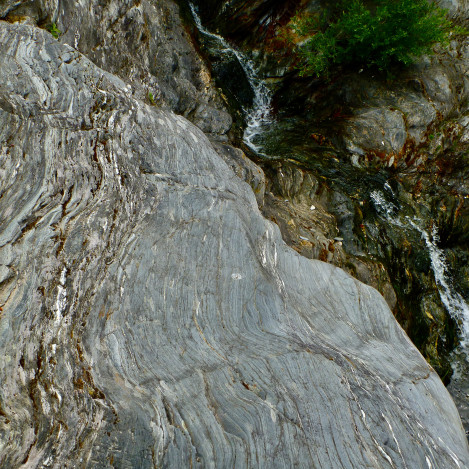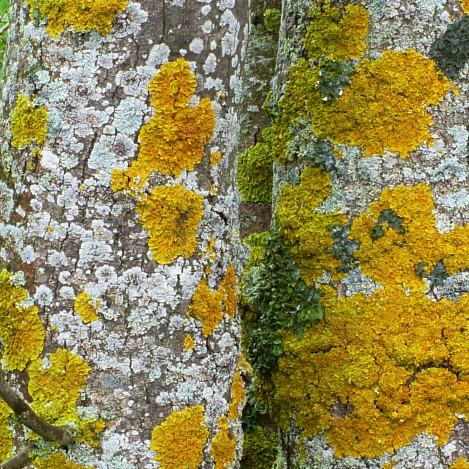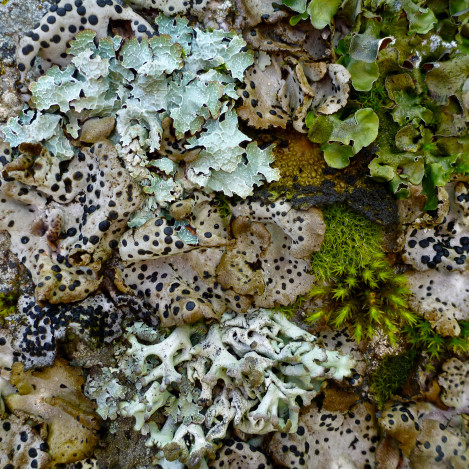In praise of Walking and Serendipity

Keith Beven
Keith Beven is Emeritus Professor of Hydrology at Lancaster University where he has worked for over 30 years. He has published many academic papers and books on the study and computer modelling of hydrological processes. Since the 1990s he has used mostly 120 film cameras, from 6x6 to 6x17, and more recently Fuji X cameras when travelling light. He has recently produced a second book of images of water called “Panta Rhei – Everything Flows” in support of the charity WaterAid that can be ordered from his website.
Two roads diverged in a yellow wood,
And sorry I could not travel both
And be one traveler, long I stood
And looked down one as far as I could
To where it bent in the undergrowth;
Then took the other, as just as fair,
And having perhaps the better claim,
Because it was grassy and wanted wear;
Though as for that the passing there
Had worn them really about the same,
And both that morning equally lay
In leaves no step had trodden black.
Oh, I kept the first for another day!
Yet knowing how way leads on to way,
I doubted if I should ever come back.
I shall be telling this with a sigh
Somewhere ages and ages hence:
Two roads diverged in a wood, and I—
I took the one less traveled by,
And that has made all the difference.
~Robert Frost, The Road Not Taken
All is calm, expectant and at rest. You are out of the world’s chatter, its corridor echoes, its muttering. Walking: it hits you at first like an immense breathing in the ears. You feel the silence as if it were a great fresh wind blowing away clouds. ~Frédéric Gros, A Philosophy of Walking
As we are all landscape photographers, I am, of course, mostly talking to the already converted. But there is a great deal of evidence that walking is good for you, even if the recommended daily dose of 10,000 steps has recently been revised to suggest that only 3967 is sufficient1. As well as the general benefits of being out in nature, recent research studies have suggested that walking can reduce the effects of weight gaining genes, reduce cravings for sugary treats, reduce the risk of breast cancer, reduce joint pain, and boost immune function2. It has even been suggested that it might boost creativity3. And in my experience, it just helps you to feel better. Many recent popular books have stressed the benefits of walking for both health and temperament.
Some that can be recommended include The Salt Path on the coastal paths of South-West England by Raynor Winn (though its sequels a little less); A Walk in the Woods on the Appalachian Trail by Bill Bryson; Wild on the Pacific Crest Trail by Cheryl Strayed; The Old Ways: A Journey on Foot, by Robert MacFarlane (actually multiple walks); How to Walk by Thich Nhat Hanh, and In Praise of Paths by Torbjørn Ekelund. There are also many well-known older books, including Travels with a Donkey in the Cévennes by Robert Louis Stevenson, written in 18794. This is a classic case of the Englishman (or in his case Scotsman) abroad finding it difficult to accept local advice, but the book became celebrated enough that the route he took through the Cévennes from Le Monastier to Alais (now Alès) with Modestine (his stubborn and resistant donkey) is now known as the Stevenson Path. Other classics are John Hilaby’s Journey through Britain (1968), describing his walk from Land’s End to John O’Groats, and A Time of Gifts by Patrick Leigh Fermor, published in 1977 but describing part of his walk from the Hook of Holland to as far as Constantinople in 1933/34 (there were 2 further volumes, the last published posthumously).
For my part, I travel not to go anywhere but to go. I travel for travel’s sake. The great affair is to move, to feel the needs and hitches of our life more readily …. And when the present is so exacting who can annoy himself about the future. ~Robert Louis Stevenson, Travels with a donkey in the Cévennes
The Stevenson Path is actually a somewhat longer route starting in Puy-en-Velay5. Many other well-signposted long-distance paths are already well known, such as the Pennine Way, the pilgrim routes to St. Jacques de Compostelle in Spain, and the network of Sentiers de Grandes Randonnées in France (the Stevenson Path is the GR70)6 . More recent additions include the Rota Vincentina or Fisherman’s Path in Portugal7; the High Scardus Trail in Albania, Kosovo and Macedonia8; the West Highland Trail in Scotland9; the South Downs Way in Sussex and Hampshire10; and by combining the Welsh Coastal Path with the Offa’s Dyke Trail you can now verify the size of Wales by walking all the way around it11.
All, intentionally or not, draw in ancient and modern mythologies of walking - from pilgrimages and diasporas to flâneurisms and derives - as part of their effect. … it is assumed that the artist/walker comes and goes, does no harm. It is assumed that the artist loves and seeks to protect the landscape through which he moves. ~Andrea Phillips. Walking and Looking12
As a way of travelling, of course, it is slow, but with patience great distances can be achieved, and at a pace that allows you to look at the flowers, listen to the birds, rest by running waters, and chance by photo opportunities. Such opportunities are not generally planned, but are rather serendipitous, views passed by en route. This means, however, a degree of concentration is required to spot those opportunities when they arise, something that induces focus on your surroundings as you walk. But walking allows that in ways that faster means of travel by bike or car do not do so to the same extent. With speed comes other things to concentrate on.
Walking is the best way to go more slowly than any other method that has ever been found.~ Frédéric Gros, A Philosophy of Walking
Of course, walking was once a necessity to travel anywhere if you were not rich enough to afford a diligence or horse – hence the expression to travel by “Shank’s pony”13. In print, walking has been recommended by writers such as Jean-Jacques Rousseau (1712-1778) in his book Reveries of the Solitary Walker (1778) that he had been working on in the months before he died (albeit, that the book is primarily an extended complaint against those who have persecuted him – his house in Môtiers was literally stoned in 1765).
I can find no manner so simple and effectual, to execute this purpose, as to keep a faithful register on my solitary walks and the reveries which accompany them; when I find my mind entirely free, and suffer my ideas to follow their bent, without resistance or control. These hours of solitude and meditation are the only ones in the day when I am entirely myself, and for myself, without diversion, or obstacle; and when I can truly say, I am what nature designed me.~ Jean-Jacques Rousseau, Reveries of a Solitary Walker, 2nd Walk
Rousseau’s writings later inspired the Prelude of William Wordsworth (1770-1850). Others who have been inspired by walking have been Henry David Thoreau (1817-1862) in his lecture on Walking delivered in Concord in 1851; and the French philosopher Frédéric Gros who wrote a Philosophy of Walking published in 2008.
Walking is not a sport. Putting one foot in front of the other is child’s play. When walkers meet, there is no result, no time: the walker may say which way he has come, mention the best path for viewing the landscape, what can be seen from this or that promontory.Frédéric Gros, A Philosophy of Walking
The philosopher Immanuel Kant (1728-1804) never left his home village of Könisburg but would take a walk every day at 5pm regardless of the weather and always alone because, breathing through his nose, he did not want to have to talk to someone. The route he used is now known as the Philosopher’s Walk. He did not walk for exercise (in summer heat he would go very slowly and rest in the shade) but to clear his head from the imperatives of thinking and writing. Another philosopher, Friedrich Nietzsche (1844-1900), was even more committed to walking particularly when he was staying at his house in Sils Maria in the Engadine in Switzerland. He would walk for up to eight hours a day as an aid to thinking (and coping with migraines), scribbling notes as he went. Many of his (rather dense) books were composed in this way, including Thus spake Zarathustra (there is a Zarathustrastein at the edge of Lake Silvaplana near Sils Maria).
Walking remains a relatively cheap way of travelling (depending on how far you need to pay for accommodation if walking long distances) but takes time. While the slow speed is an advantage for the photographer, taking the camera for a walk also has some disadvantages. One is the additional weight that needs to be carried, especially if walking for many days, which with digital might also require a need to recharge batteries)15. The second is that in focusing on potential images, especially the small-scale details, the need to look around means that you spend less time looking at where you put your feet, increasing the possibility of tripping over something16. I also find that the continued concentration can add to the fatigue, especially when walking with others so that it is only polite not to spend too much time exploring a potential image giving rise to a certain stress in taking an image quickly.
You might already know the types of things you expect to see, from looking at a map, reading a guide, searching Google Earth, or using apps such as Photopills17– the mountain views, the tumbling streams and waterfalls or wide tranquil rivers, the wild flowers, the old farm buildings and alpine chalets, or sometimes the railway lines or motorways at the bottom of the valley. But you still need to find the image or thought (there is perhaps an analogy here with the strolling street photographer or flaneur). As Susan Sontag put it:
The photographer is an armed version of the solitary walker reconnaitering, stalking, cruising the urban inferno, the voyeuristic stroller who discovers the city as a landscape of voluptuous extremes. Adept of the joys of watching, connoisseur of empathy, the flâneur finds the world 'picturesque'.Susan Sontag, On Photography
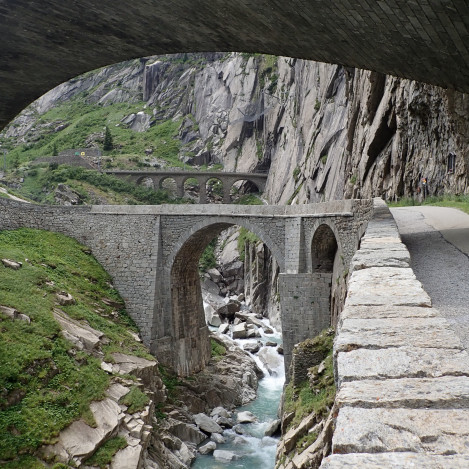
On the TransSwiss trail: roads at the bottom of the valley - the old road, the new road and the railway climbing towards the St. Gotthard Pass
Finding the image for the landscape photographer will always be a challenge: It might be a detail, a particular play of light on the landscape, or the anticipation of a composition of elements coming into alignment to left or to right as you approach. And do not forget that the image might be behind you, so that it is worth looking back now and again.
It is one of the secrets of walking: a slow approach to landscapes that renders them familiar. Like the regular encounters that deepen friendship. Thus a mountain skyline that stays with you all day, which you observe in different lights, defines and articulates itself. When you are walking, nothing moves: only imperceptibly do the hills draw closer, the surroundings change. ….. When we are walking it isn’t so much that we are drawing nearer, more that the things out there become more and more insistent in our body. Frédéric Gros, A Philosophy of Walking
This results, however, in a third disadvantage of taking a camera for a walk in that it can break up the rhythm of walking, punctuating the progress with a series of pauses. Such pauses can be a good excuse to stop when tired or going steeply uphill, but rhythm is important in walking. The continuity and simplicity of the rhythm of putting one foot in front of the other provides the opportunity to create distance towards the goal for the day and away from the stresses and strains of everyday life. There are not too many decisions to be made and those are simple: where to place the next foot (rather important on rough ground when traversing steep slopes or on forest paths with roots); and which way to turn when you meet a junction18.
The further I walked, however, I found, in contrast, that my mind began to quieten down. And emptied. I stopped thinking, and instead focused on my tiredness. The weight of my feet. The pain in my back. And I began to wander and wonder whether walking could provide a way through the thoughts that dominate my work. A way through intellectual practice. Cliff Andrade, Researching Walking as Art Practice, 202119
One satisfying element of walking a long-distance path (whether designated or, even better, of your own invention from studying the maps) is the sense of progress through the landscape without having to return to your starting point. This is easier, of course, in some places than in others. The public transport system in Switzerland has allowed me and my partner Monique to follow some of the national trails in sections of a few days without having to carry too much weight (important now we are over 70 …. even if I am still a bit jealous of those who can backpack both camping gear and large format film cameras into the wild20). In recent years, we have completed the Via Jakobi from Lake Constance in the north to Geneva in the South; the Crêtes du Jura down the western frontier with France; and the TransSwiss Trail (from Porrentruy in the west to Tessin in the south-east, in that way. All have been extremely rewarding.
Such walks are liberating as well as keeping us in good shape. Even if not taking the camera for a walk, the physical effort does not leave much energy for other worries. Such multiday walks do not allow any control over the light, of course: you have to be pragmatic and accept the serendipity principle in balancing progress in distance with the time spent in waiting for the right light… and the patience of your walking companion(s). But staying overnight, particularly up in the mountains does allow opportunities at the beginning and the end of the day21 (and at night for the astrophotography enthusiasts, though it is quite a good idea to get some rest to be ready for the following day!).
But at every junction of course we have the Robert Frost problem of the road not taken. We will often have a goal in mind in deciding which path to take: the continuation of a long distance route, some new valley to explore, some col to traverse, the evening’s accommodation to reach. It is convenient to follow the marked paths, but what about the “roads less travelled by” that might “make all the difference”. It is a similar problem to that of choosing what to photograph: of always going to the classic landscape photograph locations or seeking the serendipitous surprises of some road less travelled. Why follow the herd? Of course, on most long-distance paths herds of sheep or goats are more common than herds of walkers – with the exception perhaps of parts of the Camino de Santiago de Compostella route in the south of France and northern Spain. In that case if you are not a pilgrim yourself and really want to make images of landscapes rather than other pilgrims, then it might be better to choose another route!
Actually, going on foot in the 21st Century already represents the road less travelled by, whatever path you might choose to take. And, as Rebecca Solnit puts it in her book Wanderlust, walking provides a way to “find what you did not know you were looking for”. Many of the photographs taken along the way are just recording the journey, allowing us to “possess the moment” (Sontag again) and add it to our store of visual memories. But, with luck, just occasionally the opportunity might arise for something better, that combination of elements coming into alignments in just the right light - unplanned even if not exactly unlooked for because, with a camera to hand, we are always looking for that opportunity. To quote Rebecca Solnit again, walking supplies “the unpredictable incidents . . . that add up to a life …” and, for those who do not walk, denies “a vast portion of their humanity.”
What is it that makes it so hard sometimes to determine whither we will walk? I believe that there is a subtle magnetism in Nature, which, if we unconsciously yield to it, will direct us aright. It is not indifferent to us which way we walk. There is a right way; but we are very liable from heedlessness and stupidity to take the wrong one. We would fain take that walk, never yet taken by us through this actual world, which is perfectly symbolical of the path which we love to travel in the interior and ideal world; and sometimes, no doubt, we find it difficult to choose our direction, because it does not yet exist distinctly in our idea.Henry David Thoreau, Walking, 1851
There is nothing like walking to get the feel of a country. A fine landscape is like a piece of music; it must be taken at the right tempo. Even a bicycle goes too fastPaul Scott Mowrer (1887-1971)
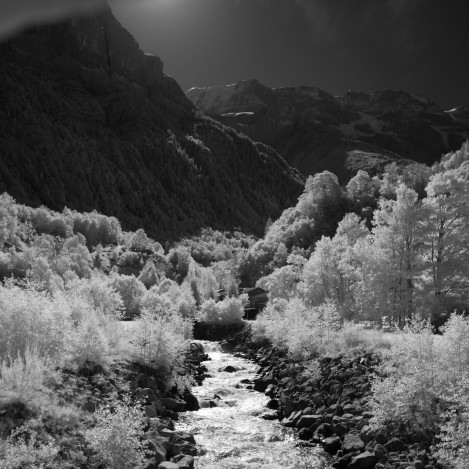
Sefinental near Lauterbrunnen, Switzerland (taken with an IR Converted X-E2, giving extra weight to carry)
References
- See https://www.theguardian.com/lifeandstyle/2023/aug/09/3967-steps-a-day-the-new-magic-number-for-a-healthy-happy-life
- https://www.health.harvard.edu/staying-healthy/5-surprising-benefits-of-walking
- https://www.apa.org/pubs/journals/releases/xlm-a0036577.pdf
- Travels with a Donkey in the Cévennes can be read at https://www.gutenberg.org/files/535/535-h/535-h.htm
- https://www.gr70-stevenson.com/en/trail.htm. The journey was repeated (with donkeys) as a way out of depression by Christopher Rush in his 2006 book To Travel Hopefully, published by Profile Books, and in a very amusing retelling, by Hilary Msacaskil and Molly Wood, in Downhill All The Way: Walking with donkeys on the Stevenson Trail, also published in 2006. One of the first recorded followers of Stevenson was John Alexander Hammerton as recorded in his book In the track of R. L. Stevenson and elsewhere in old France that appeared in 1907 (but in his case on a bicycle, which in some places may have been no less of a hindrance than a donkey).
- https://www.gr-infos.com/gr-fr.htm
- https://rotavicentina.com/en/
- https://www.lonelyplanet.com/news/hike-albania-kosovo-macedonia-high-scardus-trail#
- https://www.westhighlandway.org
- https://southdownsway.org
- https://undiscovered-wales.co.uk/2020/11/14/what-its-like-to-walk-right-around-wales-tips-and-tales-from-the-trail-with-seasoned-hiker-michelle-gollins/. The size of Wales is commonly used as a unit of area – see https://en.wikipedia.org/wiki/List_of_unusual_units_of_measurement#Wales. England is 6.275 times the size of Wales.
- Andrea Phillips, in Walking and Seeing, provides a more philosophical discussion of the place of walking in contemporary art, but with a focus on the urban landscape. As an example of the type of exposition: “Walking, in this sense, is one marker of an economy of art in which the desire for process-based, participatory, embedded experience has replaced ideals of abstracted contemplation for reasons that compound a schism between ethical engagement and aesthetic representation. Walking has enchanted us precisely because of its own unfinished nature, because it does not seem to acquire a regulatory air, because it is a proposal, not even a maquette or a map, that which Giorgio Agamben would call a 'means without end'." (Cultural Geographies, v12, 507-513)
- This phrase seems to be of Scottish origin, a play on the word shanks, meaning legs. It is first recorded in The Tea-Table Miscellany: Or, a Complete Collection of Scots Songs, published in 1729 by the Scottish poet, playwright, editor and librarian Allan Ramsay (1686-1758)
- See, for example, https://walkingart.interartive.org/2018/12/hbm-walking
- I try to travel as light as possible, either with an Olympus TG waterproof camera with an added telephoto lens (but the lack of a viewfinder is always a bit frustrating) or with Fuji digital cameras and their smaller “fujicron” prime lenses. Both are more than adequate for prints to at least 25x25cm. I did once set out on the Via Jacobi in Switzerland with only 2 spare batteries for the TG with the idea that would only allow an average of 5 images a day to concentrate the mind on choosing only the best. I found that this was a good discipline, but that walk had to be cut short, so I never actually ran out of battery.
- Something I am somewhat renowned for amongst my nearest and dearest. Fortunately, no injuries have resulted (yet)!
- See https://www.photopills.com
- However, it is always worth being careful at junctions, especially where interesting long distance paths are both marked with the same type of trail blazes (red and white bars in France, Belgium and Switzerland, for example). I have once or twice followed the bars, thinking I was on the right track, only to realise that I had missed a turn at a junction of two trails).
- See https://www.walkingartistsnetwork.org/2021/06/14/researching-walking-as-art-practice where Cliff Andrade describes the start of a walk from John O’Groats to Land’s End in the Walking Artists Network (WAN) blog.
- See, notably, Alex Burke at https://www.alexburkephoto.com
- I learned this at an early age when Youth Hostelling in the Lake District with some friends in about 1965. Staying at the Black Sail hut in Ennerdale, which faces west, the setting sun dipped below a layer of cloud, with the reflected light making the cliffs at the head of Ennerdale glow orange. I still have the Kodachrome slide somewhere …..

